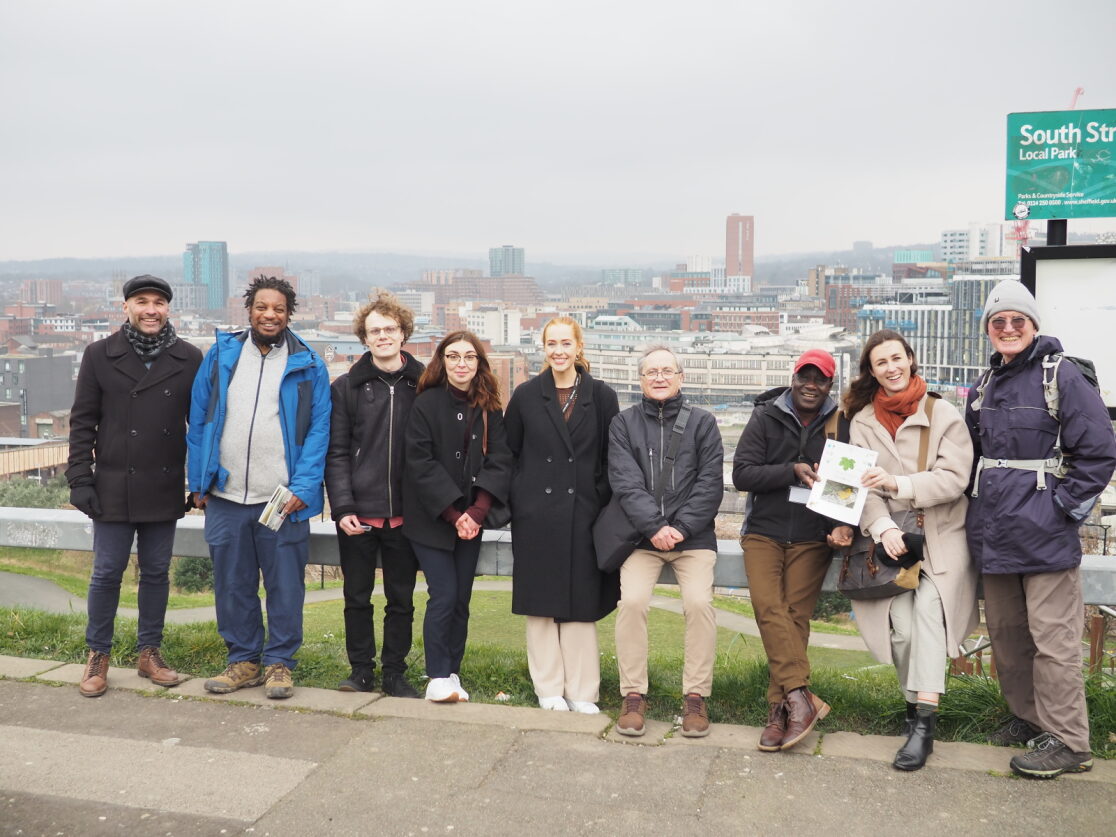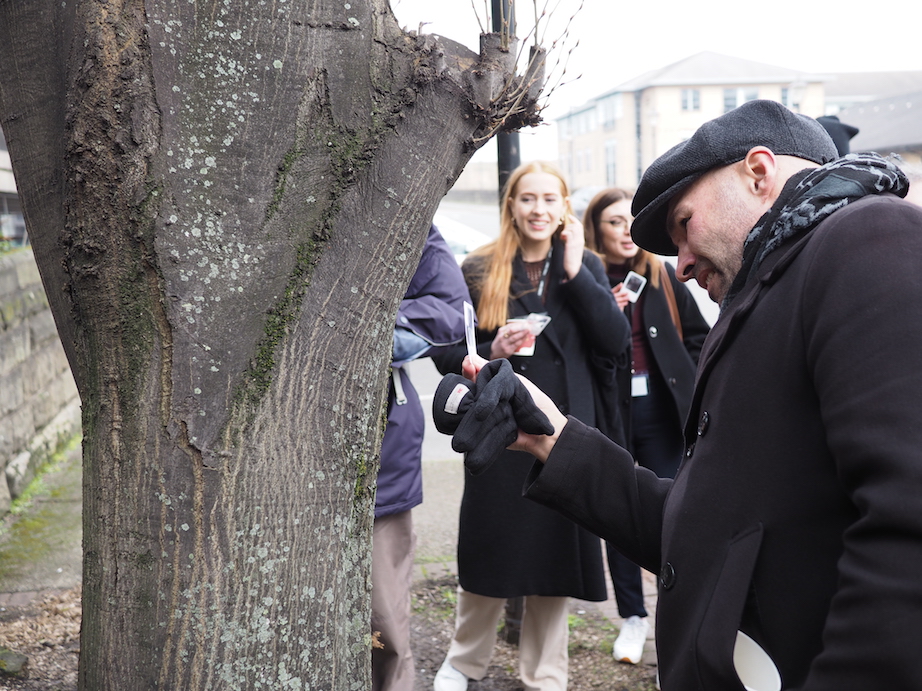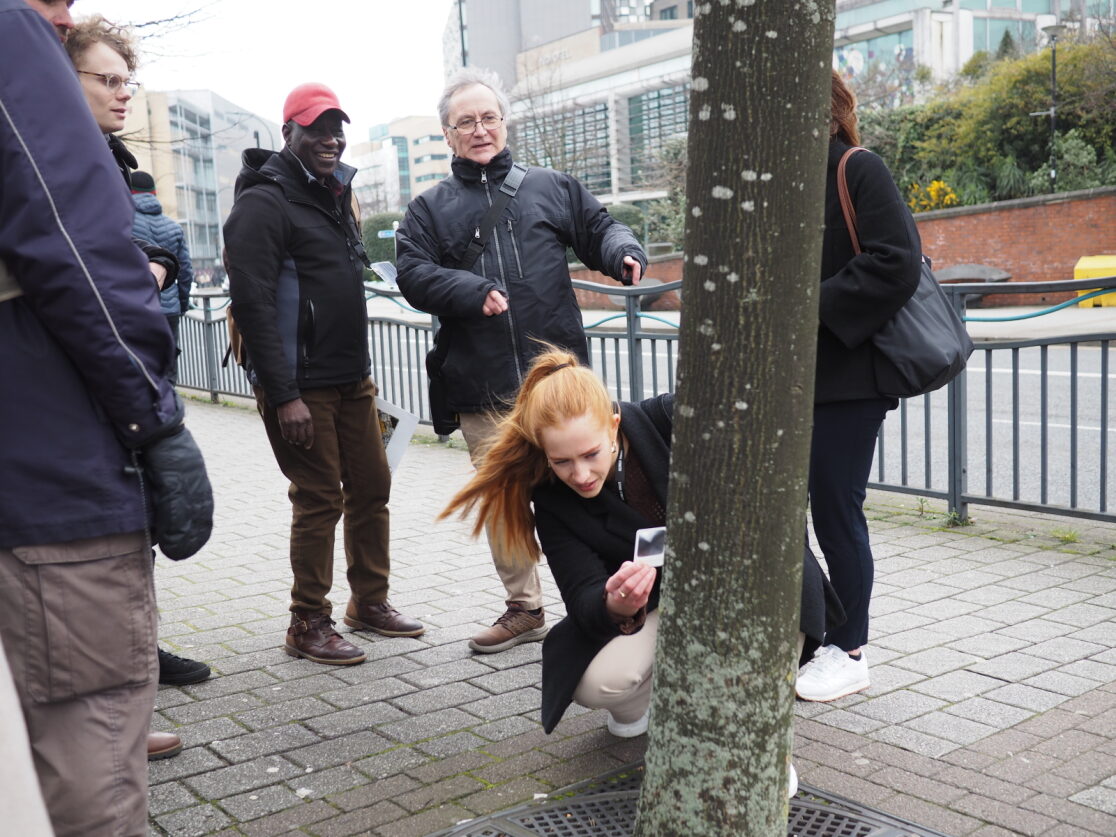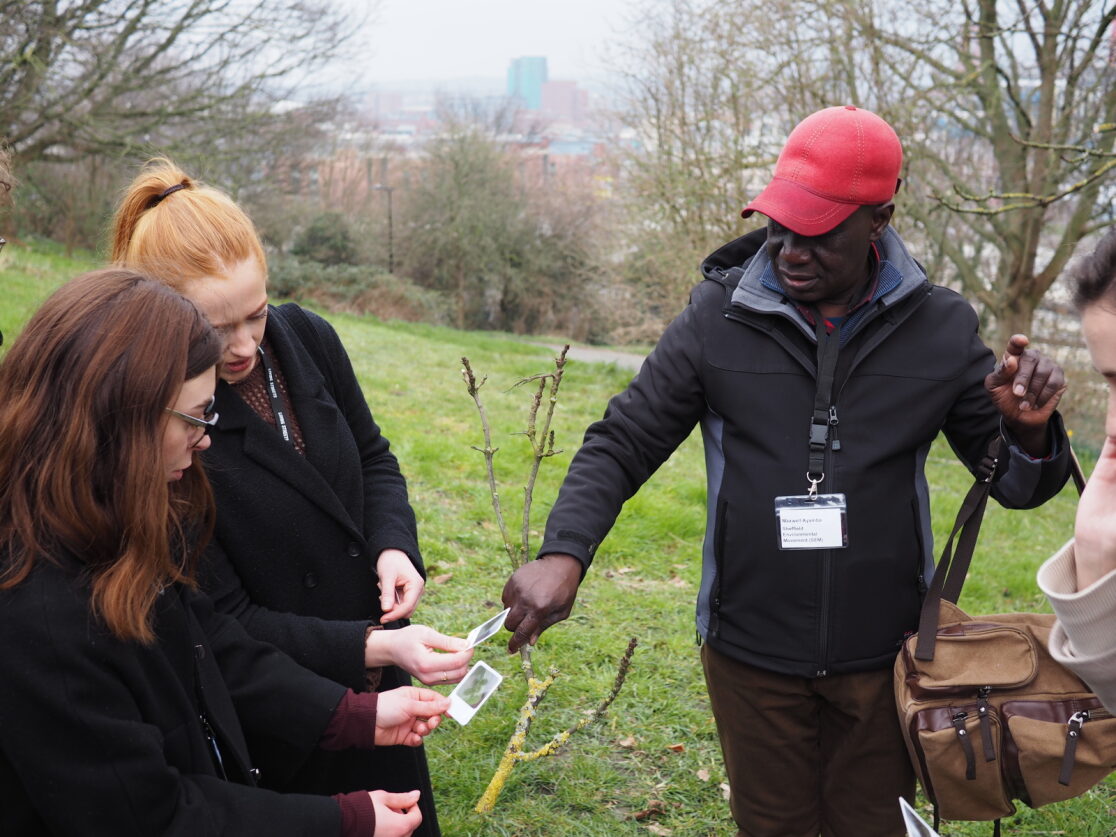What nature tells us about air pollution
As part of our European Climate Foundation funded-project, we are working with community-led organisations, like Sheffield Environmental Movement (SEM), so we can better understand the issues they face.
We use our expertise to support them to call for local change. It’s vital to our work to understand the lived experience of communities impacted by poor air quality so we can campaign and lobby for inclusive street improvements.
Through working with Living Streets, SEM are hoping to bridge the gap between people in the community with local decision makers so that people’s concerns feed into consultation responses, urban and transport planning and walking infrastructure changes.
Our Engagement Manager, Aisha Hannibal spoke to members of SEM about their vision to enable communities to discover the biodiversity around them and how nature can be used as an indicator for air pollution.

All images (c) Sam Wakeling

Sheffield Environmental Movement was started in 2016 to ensure everyone has a clean healthy environment and access to open green spaces to promote a good quality of life. SEM aims to develop resilient communities by influencing decision makers to hear local residents that can often feel ‘invisible’ and marginalised.
Empowering communities for change
SEM has observed that often when local areas are undergoing planning and development changes, community engagement is either non-existent or used as an exercise to tick a box without any outcomes.
“I want to see visible changes in communities" said Maxwell Ayamba, Founder of SEM "and the only way this can happen is by empowering people, giving them a voice and leverage to understand they belong, they own things and are valued as human beings. In that way the whole process of democratic change can have legitimate impact."
Members of SEM led a Walkshop as part of our 2024 UK Walking Summit in Sheffield, which had a focus on overcoming opposition to create healthy walking environments. They took attendees around the local area to see the impact of air pollution by studying the trees and air using the OPAL air quality survey which has been developed by Imperial College.
“We looked at the trees in detail, the patterning of the lichen directly in relation to the air flow" said Jenson Grant, Artist and SEM associate, "How the nitrogen loving lichen were in different places on trees as they were nearer or further away from pollutants. Looking at these indicators told us something about how and where we are living, and the tangible impact of air pollution mapped on to the geographical street scape."
What does change look like?
SEM arrange walks with communities heavily impacted by air pollution and found that many people didn’t know the correlation between the air they breathe and the health impact that many of them have experienced. It’s not until SEM take people to areas with cleaner air where there is less localised air pollution such as the Peak District National Park, that they notice the difference documented by natural indicators. By taking people on led walks both in the city centre and in the countryside, they hope to increase people’s understanding of air quality as well as improve their health.
When members of communities attend their events and are confronted with the visible signs of air pollution, they may see a connection with themselves or someone they know who suffers from conditions like asthma or cardiovascular diseases. Many feel they have no voice to call for interventions such as traffic calming measures and increased investment in walking infrastructure to reduce motorised traffic and provide viable alternatives for sustainable travel.


Jenson Grant told me, “When you take groups out and walk through these polluted spaces, they can visually see the impact of air pollution and by doing so can go to places that are less polluted like the countryside to escape that. The more you can go to those spaces you reduce the amount of toxic pollutants in your respiratory system.”
When members of communities attend their events and are confronted with the visible signs of air pollution, they may see a connection with themselves or someone they know who suffers from conditions like asthma or cardiovascular diseases. Many feel they have no voice to call for interventions such as traffic calming measures and increased investment in walking infrastructure to reduce motorised traffic and provide viable alternatives for sustainable travel.
“We need to give people confidence, to embolden and inform them." said Jenson "It’s all about raising awareness. Most of the people we work with haven’t got the voice to participate. Engagement work is done to them, not with them, basing decisions on perceived needs rather than real ones. But when communities aren’t able to co-produce or co-create learning processes, they don’t have a sense of belonging and ownership of what needs to change."

Engaging change makers
Sheffield Environment Movement wants politicians to engage with communities in a more meaningful way, to listen to people and give them that sense of ownership so they can be part of the whole process of change. For more details on their work visit Sheffield Environment Movement's website.
Later this year we are hosting an event with local decision makers and community members to create a manifesto for change in partnership with this organisation which is delivering important and visionary work locally.
We are grateful for funding from European Climate Foundation to be able to centre the work of communities in our campaigning approach.


About the author
Aisha Hannibal
Engagement Manager, Living Streets
[email protected]